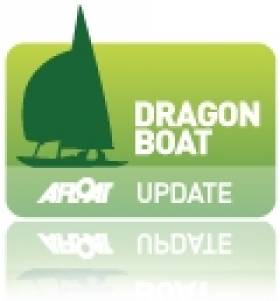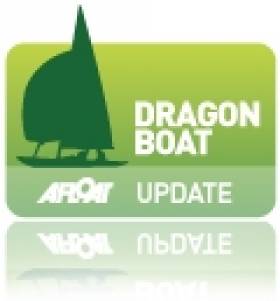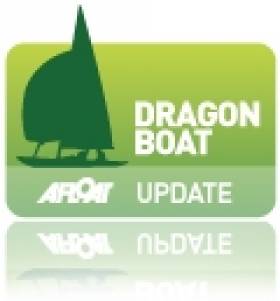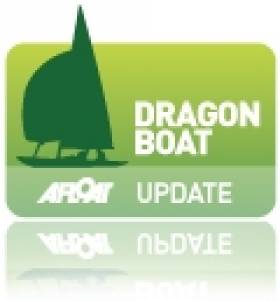Displaying items by tag: cannes
Dragon Race Cancellation Leaves Byrne Fourth Overall in Cannes
Good breeze on the first two days, light air on the third and not enough wind on the fourth: the 58 Dragons participating to the Régates Royales – Trophée Panerai profited from excellent conditions for the event opening, and namely the Irish crew skippered Martin Byrne on Jaguar-Bear who scored two wins whils race favourite and 2010 champion Anatoly Loginov from Russia on Annapurna, did not show the same consistency and strength he's known for.
Still, it's on the second day that the ranking becomes more definite as the Danish class master Poul-Richard Hoj-Jensen on Danish Blue bounced back as did Italian Giuseppe Duca on Cloud, despite a a black flag disqualification on race 3. And, Thursday, when just one race could be sailed due to the extremely light wind, the skipper from Venice together with French sailors Jean-Sébastien Ponce and Guillaume Bérenger scored a win that proved to be crucial to obtain is first ever title at the Régates Royales. Danish Blue's skipper and multiple Olympic medallist Poul-Richard Hoj-Jensen with Theis Palm and Mick Jensen jumps on the second step of the podium, whilst Russians Anatoly Loginov, Andrey Kirilyuk and Alexander Shalagin on Annapurna are distanced by a single point and finish third.
Dubliner Martin Byrne, with Brian Mathews and Pedro Andrade on Jaguar-Bear who started the series brilliantly, had a bad second day and slipped back in fourth. Interestingly enough on a total of six races, victory went to five different crews: Martin Byrne, British Ivan Bradbury on Blue Haze, French Joseph Varoqui on Rusalka, Danish Peter Warrer on Lil and Giuseppe Duca. And in the top ten spots of the overall ranking no less than eight countries are represented: Italy, the UK, Russia, Ireland, Denmark, Germany, France and Finland.
Byrne has it all to Play for in Last Race of Regates Royales
The penultimate days racing at Regates Royales yesterday saw Irish Dargon Jaguar skppered by Martin Byrne battle it out with their nearest competitors at the top of the 59 boat Dragon fleet. A 6th for Jaguar, the one time regatta leader, in race 6 leaves them in fourth overall with just two points separating the top four boats with one race to sail.
A superb win by the Italian team in very light conditions in the Bay of Cannes jumps them into the top spot tied on points with Poul Rickard Ho Jenson.
A tenth for the Russian team drops them to third just one point ahead of Jaguar. The second race of the day was abandoned at the half way point due to a disappearing breeze. Jaguar were lying in sixth position at this time well ahead of all three of their rivals and a finish under these circumstances would have left them comfortably in the lead overall.
It is all to play for in today's final race where the four leading contenders will be keeping a very close eye on each other with a winner takes all scenario.
Russians Knock Byrne off Top Spot in Cannes
The Russians have bounced back at the Regatta Royales in Cannes today, knocking Dublin Skipper Martin Byrne off the top spot in the 58-boat Dragon fleet. The Royal St. George Commodore sailing Jaguar had a disappointing second day but still lies third overall with it all to play for tomorrow.
A postponement kept the fleet ashore until 1pm waiting for the light to moderate breeze to fill in from the south. The Irish champions suffered the rath of an on the water Jury decision when they were deemed to have committed a foul after what seemed like a perfect start at the committe boat end of the line. The subsequent penalty turns were very costly and a 29th finish was disappointing.
Another good start in the second race of the day saw Jaguar lead the fleet for much of the first beat only to be undone by a 30 degree wind shift as they approached the the top mark. A 16th on that Race 5 sees them slip to third overall on 22 points narrowly behind the last years winner Russian Anotoly Loginov and Olympic and Dragon legend Poul Ricard Ho Jenson.
Day 2 marked the comeback of Longinov on Annapurna. With a twelfth and a second, the Russian skipper managed to keep his competitors at bay and jump on top of the provisional ranking with 36 points.
Ever consistent Hoj Jensen on Danish Blue, scoring a third and a 15th is now second on the overall scoreboard distanced by only one point.
Italian Giuseppe Duca on Cloud, with a second and a sixth, and having discarded a black flag disqualification he got yesterday, is now fourth and still close to the top trio. HRH Prince Heinrik of Denmark on White Lady is now fifth in the overall standing at 26 points and British Ivan Bradbury on Blue Haze sixth a 33 points.
The points are tight with three races remaining.
Dubliner Byrne Leads Denmark's Prince Henrik at Régates Royales
Dragon Edinburgh Cup winner Martin Byrne's impressive international form continues this week at the helm of Jaguar. The Dublin sailor leads HRH Prince Henrik of Denmark for overall honours at the Régates Royales in Cannes, on the south of France. Byrne, the Commodore of Dun Laoghaire's Royal St. George Yacht Club is counting a 1, 1 and 3 in the 58-boat fleet. 'We're off to a good start' Byrne, the Irish Dragon national champion, told Afloat.ie this morning. July's Edinburgh Cup winner is sailing with Brian Mathews and Portuguese sail maker Andrade Pedro.

Martin Byrne leads the 58-boat fleet
After the fleet could not go out on the water on Monday because of the strong, gusty typical Mistral breeze, the 58 boat strong Dragon fleet had three windward/leeward races on Tuesday starting in a 12 knots south-westerly, that progressively increased during the afternoon hours, topping 20 knots. Competition was strong as usual for the top positions and the class' champions imposed their supremacy. The first two races went both to Dublin's Byrne on Jaguar Bear who managed to get the better of reigning champion and class master Anatoly Longinov on Annapurna and on multiple class winner Danish Poul Richard on Antigua's flagged Danish Blue on the first one. A nearly clean score for the Irish skipper who was third in the last race of the day won by Ian Bradbury on Blue Haze. HRH Prince Heinrik of Denmark's had a very positive first day with a sixth, a second and a fourth. With five points, the Irish team is then securely on top of the provisional podium, in front of HRH Prince Henrik of Denmark (13 points) and the Russian crew skippered by Anatoly Loginov (16 points).

































































